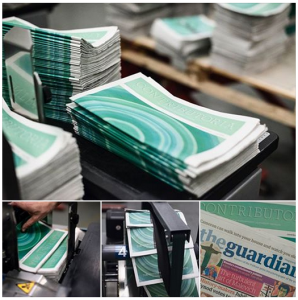A lot of people are looking at the way journalism gets made and rethinking the inputs, processes and outputs for it.
Someone coming from a technology point of view would be forgiven for thinking that the solution to the future journalism is an “operating system for news“.
But as much as we might like to break down news into its component parts and treat it like a blockchain on the way to some rendering machine, the information that makes up a story is not the same as the story itself and the role of that story in making change happen.
As the atomization of news progresses we need to be cognizant of what happens when we put too much weight on data that may not be stable enough to support the subsequent effects of the way a piece of information gets interpreted and socialized.
Just as a little thoughtless bug in a piece of software may cause incredible damage, bad data can do the same thing. It can infect journalism like a virus as it spreads and, as a result, our collective understanding of things.
I’m encouraged to see research indicating jobs for people with journalism skills are actually increasing, appearing in government agencies, banks and marketing firms that need help understanding what’s going on in the world, places that collect and generate huge volumes of data.
There will always be more data to collect, faster ways to process it and more interesting ways to output it. There’s a big market for that because there are big entities built on rich data that will devour it.
But let’s not confuse the job of moving mountains with expressing the human condition. Michelangelo famously said,
“In every block of marble I see a statue as plain as though it stood before me, shaped and perfect in attitude and action. I have only to hew away the rough walls that imprison the lovely apparition to reveal it to the other eyes as mine see it.”
That’s the really exciting opportunity.  There are stories within the volumes of new data being generated all the time that just need insightful people to reveal them.
If you are working in Big Data you must remember that the search revolution failed to grasp the importance of social. Search people viewed the Internet as an operating system, too. But the Big Data world must grasp the significance of stories and how they affect people’s lives if it is to become as important to the human experience as it wants to be.
